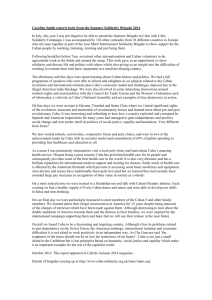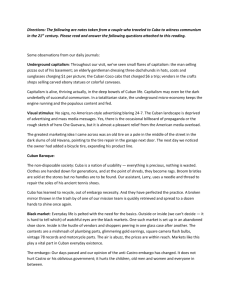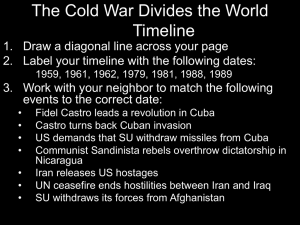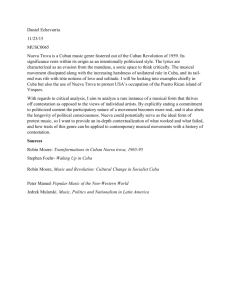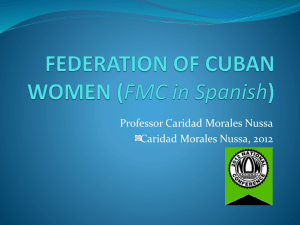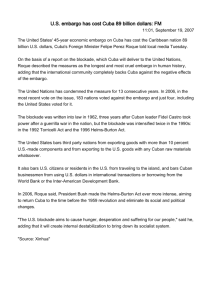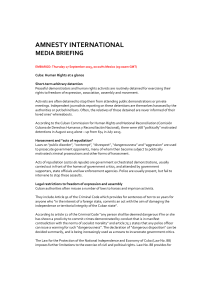PDF file of "Normalization and Human Rights in Cuba"
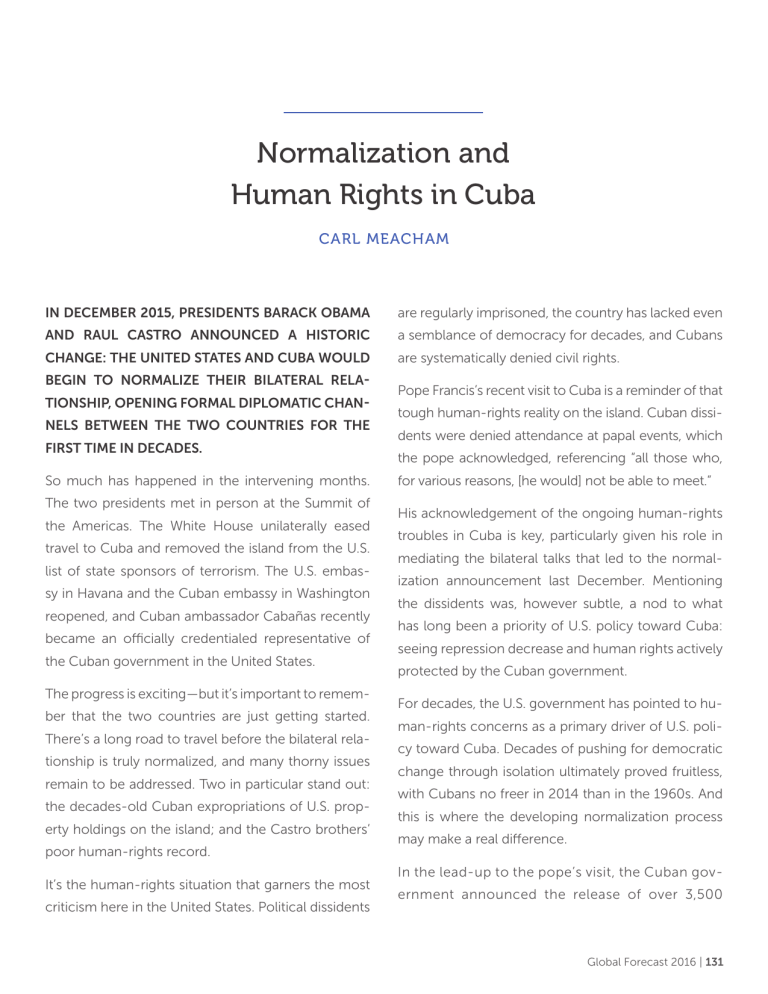
Normalization and
Human Rights in Cuba
CARL MEACHAM
IN DECEMBER 2015, PRESIDENTS BARACK OBAMA
AND RAUL CASTRO ANNOUNCED A HISTORIC
CHANGE: THE UNITED STATES AND CUBA WOULD
BEGIN TO NORMALIZE THEIR BILATERAL RELA-
TIONSHIP, OPENING FORMAL DIPLOMATIC CHAN-
NELS BETWEEN THE TWO COUNTRIES FOR THE
FIRST TIME IN DECADES.
So much has happened in the intervening months.
The two presidents met in person at the Summit of the Americas. The White House unilaterally eased travel to Cuba and removed the island from the U.S. list of state sponsors of terrorism. The U.S. embassy in Havana and the Cuban embassy in Washington reopened, and Cuban ambassador Cabañas recently became an officially credentialed representative of the Cuban government in the United States.
The progress is exciting—but it’s important to remember that the two countries are just getting started.
There’s a long road to travel before the bilateral relationship is truly normalized, and many thorny issues remain to be addressed. Two in particular stand out: the decades-old Cuban expropriations of U.S. property holdings on the island; and the Castro brothers’ poor human-rights record.
It’s the human-rights situation that garners the most criticism here in the United States. Political dissidents are regularly imprisoned, the country has lacked even a semblance of democracy for decades, and Cubans are systematically denied civil rights.
Pope Francis’s recent visit to Cuba is a reminder of that tough human-rights reality on the island. Cuban dissidents were denied attendance at papal events, which the pope acknowledged, referencing “all those who, for various reasons, [he would] not be able to meet.”
His acknowledgement of the ongoing human-rights troubles in Cuba is key, particularly given his role in mediating the bilateral talks that led to the normalization announcement last December. Mentioning the dissidents was, however subtle, a nod to what has long been a priority of U.S. policy toward Cuba: seeing repression decrease and human rights actively protected by the Cuban government.
For decades, the U.S. government has pointed to human-rights concerns as a primary driver of U.S. policy toward Cuba. Decades of pushing for democratic change through isolation ultimately proved fruitless, with Cubans no freer in 2014 than in the 1960s. And this is where the developing normalization process may make a real difference.
In the lead-up to the pope’s visit, the Cuban government announced the release of over 3,500
Global Forecast 2016 | 131
prisoners in a gesture of good faith (although, to be fair, many worry that the gesture was an empty one). We can’t know yet if it was a real step forward, but we do know that it was one of the largest releases of prisoners since Fidel Castro took power in 1959.
The changing bilateral relationship has the potential to create real change. For the normalization process to be credible, the two countries must work together to address human rights. And it seems increasingly likely that they’ll do just that.
The first reason is simple: for the first time in decades, they can. With bilateral dialogues underway since
December of last year, channels of communication are finally open. And there’s nothing excluding human-rights concerns from those channels.
The second is more nuanced: human rights are no less a priority of U.S. foreign policy in Cuba than they
132 | Center for Strategic and International Studies
For the normalization process to be credible, the United States and Cuba must work together to address human rights.
were before, but now, Washington can speak from an informed vantage point on the reality on the ground in Cuba—and on what needs to change. What’s more, we can rally the region behind us—a region that long opposed U.S. isolation of Cuba, despite also looking unfavorably on the practices of the Castros’ government. After decades of the opposite, the region will no longer regard the United States as part of the problem. Regional support will only make U.S. efforts to highlight Cuba’s challenges more powerful. Nothing roots out injustice as efficiently as shining a light on it, and we finally have access to the switch.
No one knows this better than the Cuban government—an institution with more factions than ever willing to begin to consider change primarily out of economic necessity, but with a massive infrastructure designed to prevent just that. That same infrastructure made the Cuban government difficult to bring to the table and on board with the normalization process.
That isn’t to say that Washington is united on the issue, either. Many of the very people that would be best equipped to bridge the gap between the two countries—prominent Cuban Americans, and elected officials in particular—are the quickest to criticize the new relationship rather than realizing the tremendous potential to advance the cause of human rights granted by the new policy.
For all that the old policy toward Cuba undoubtedly had the right priorities, it was a policy that tied our hands behind our back. A very long cold shoulder brought about little in the way of change that advanced U.S. priorities on the island. Normalization will not be without setbacks. But, we’re seeing some signs that more will be obtained with dialogue than through isolation.
Global Forecast 2016 | 133


